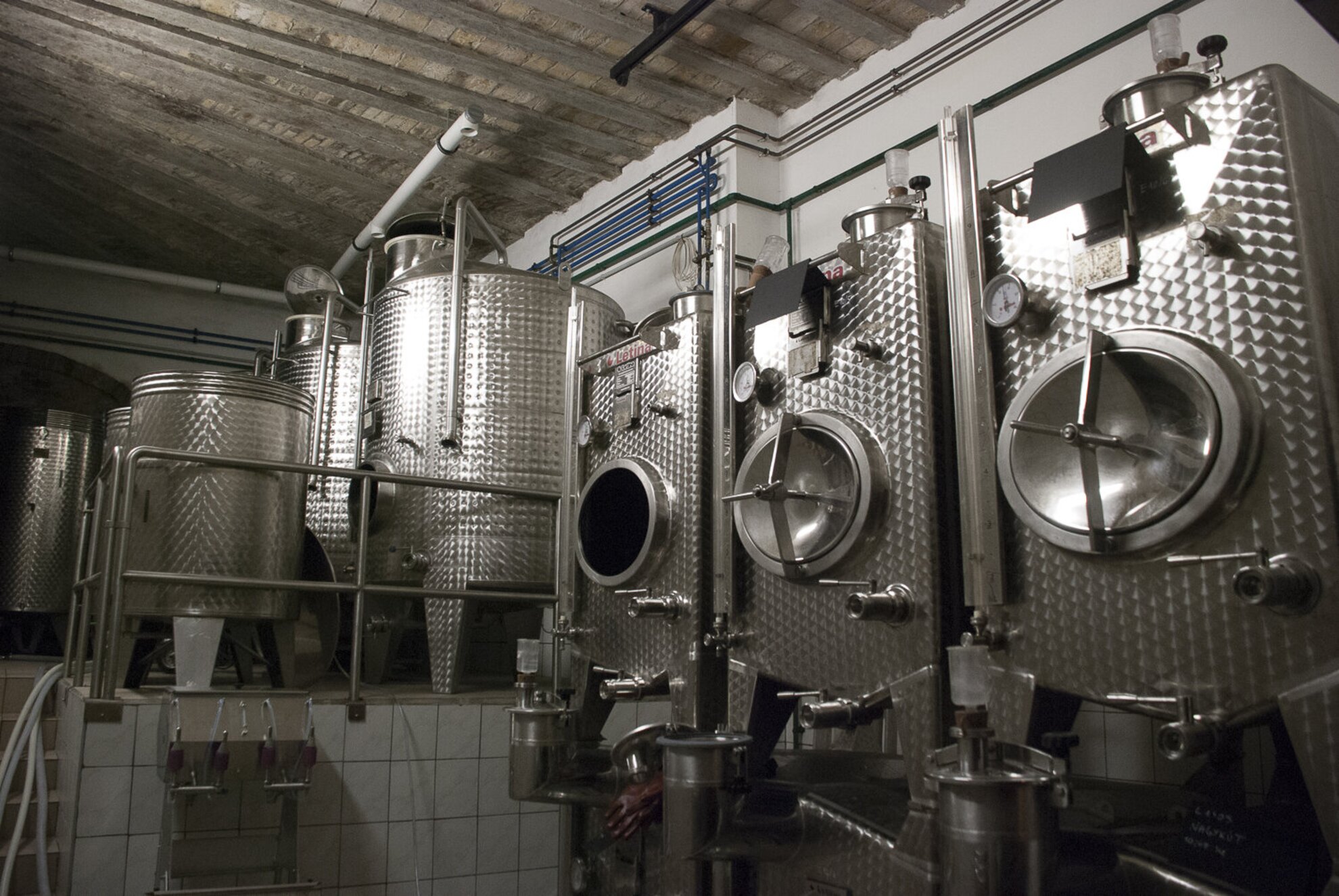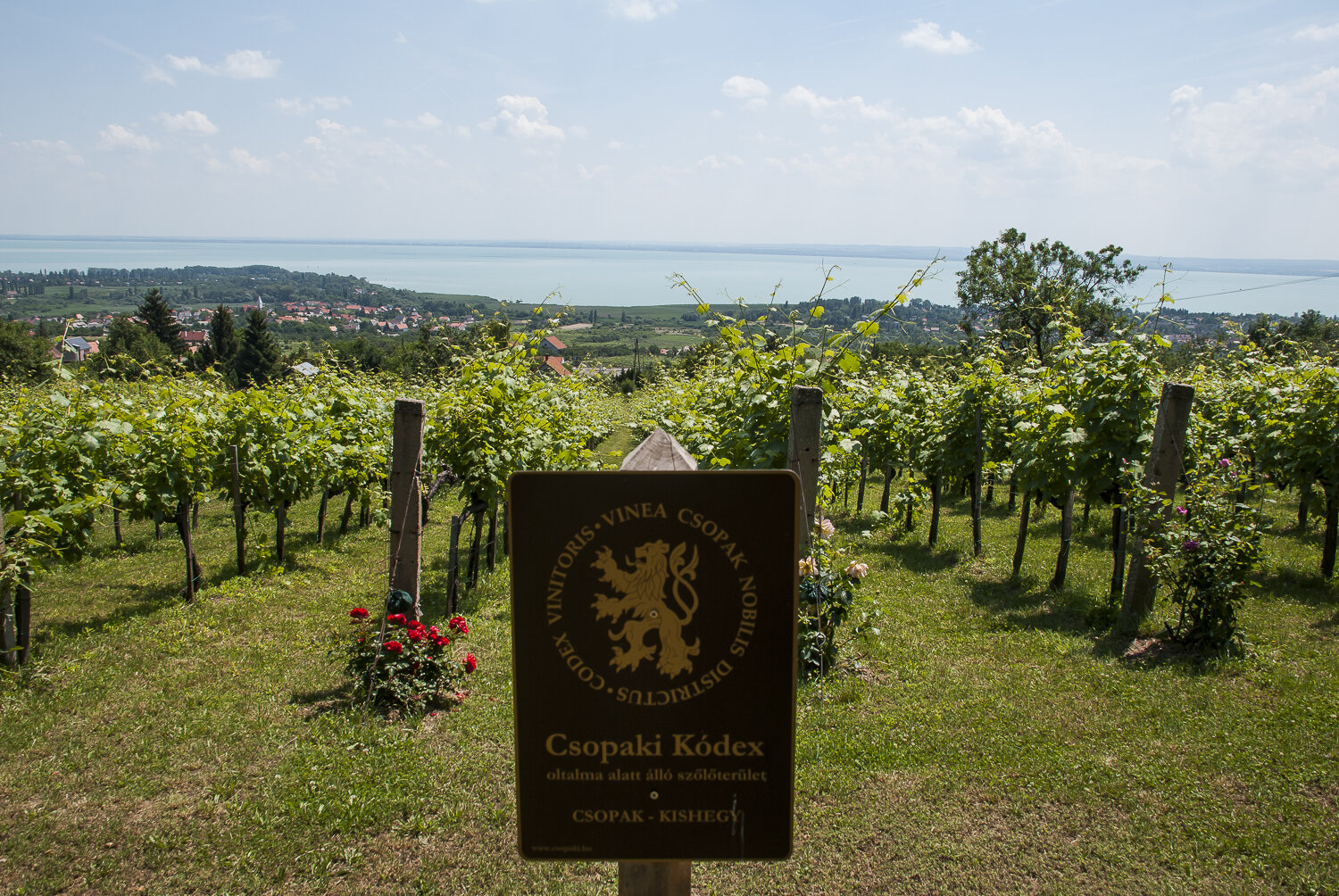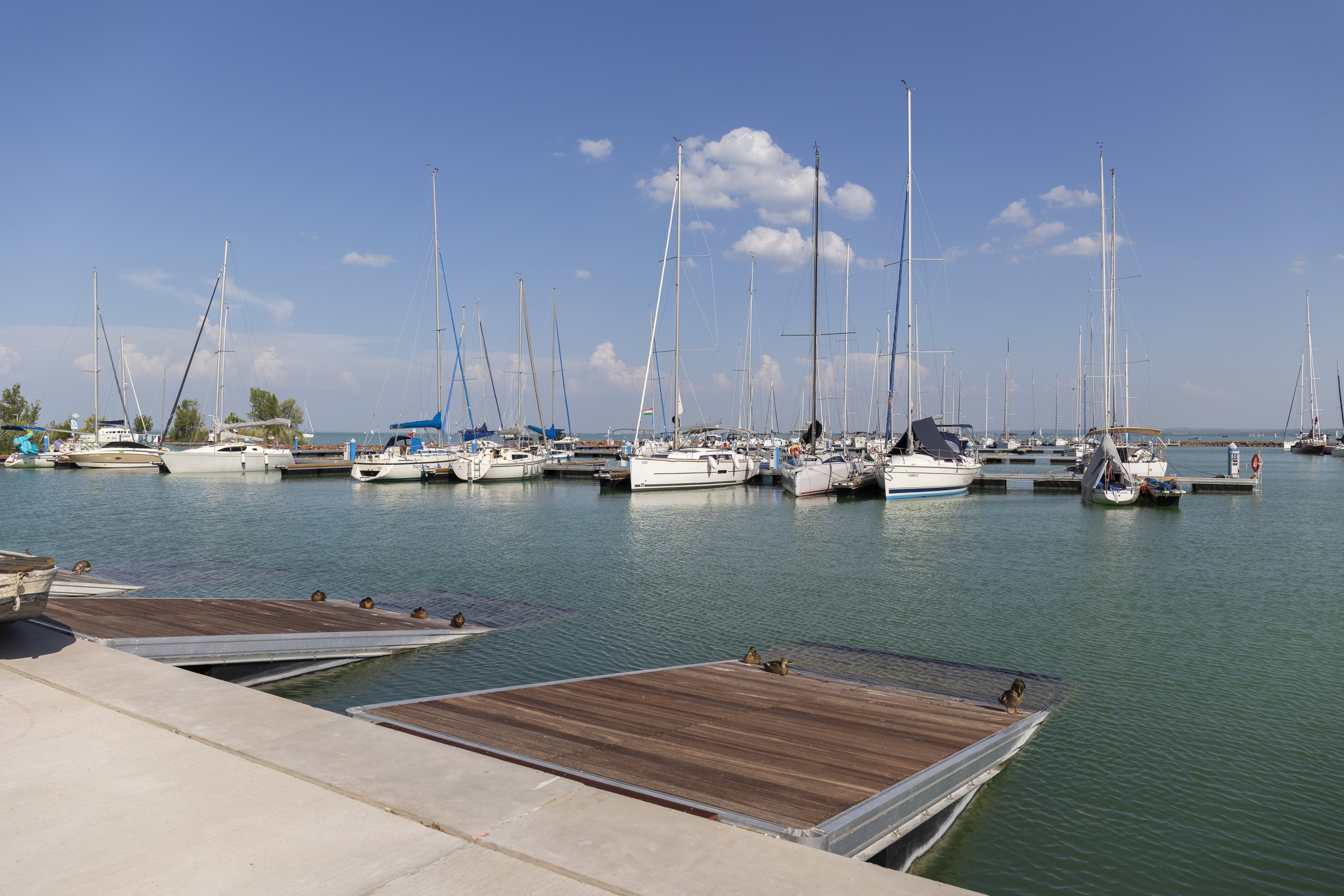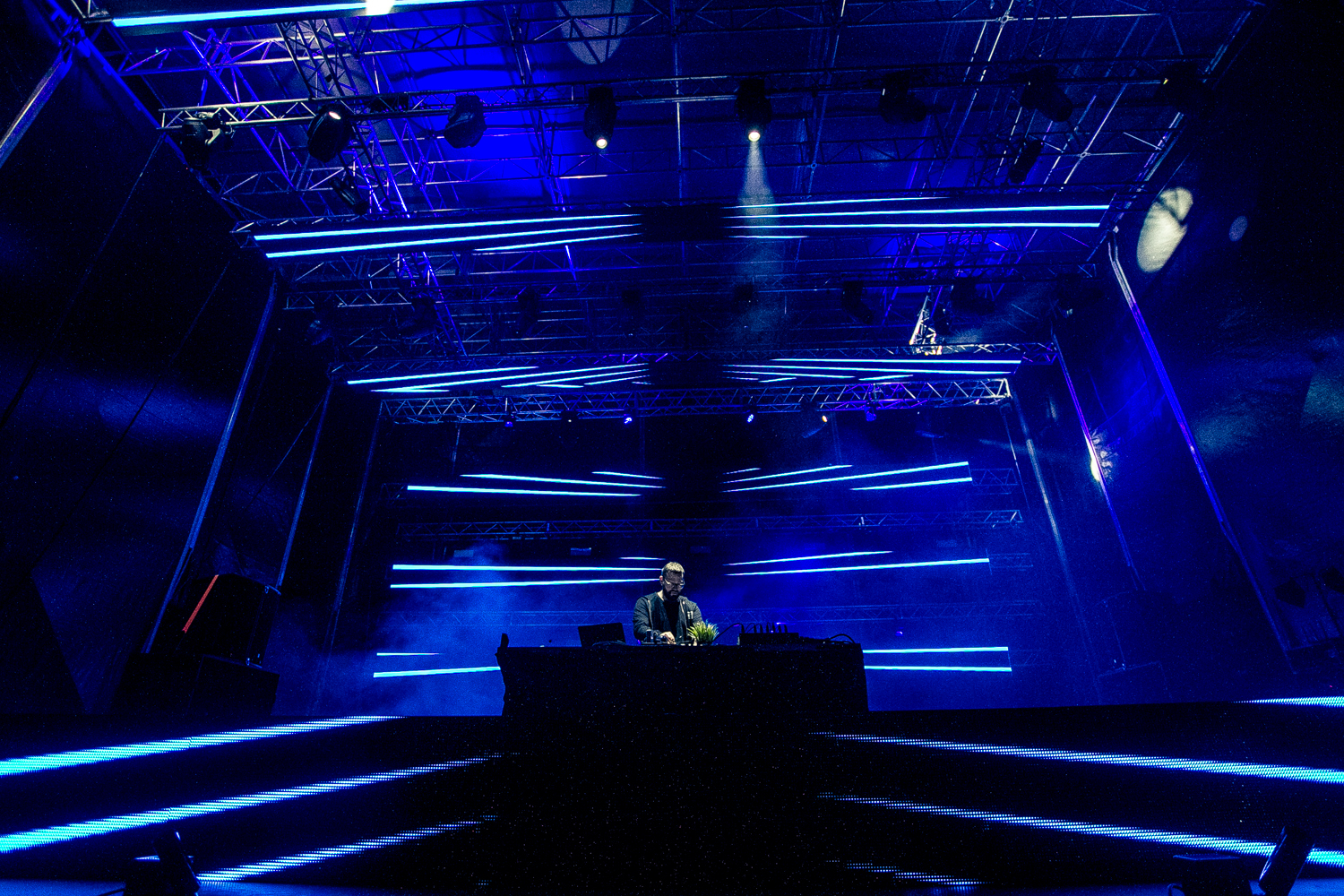More than a newbie
We started our tour at Zelna, the winery we raved about in August – they were one of the biggest surprises at the Füred wine weeks. This year, Barna and his team harvested grapes from a 7-hectare vineyard with a varied grape selection: Pinot Gris, Riesling, Merlot, Zweigelt, Cabernet Sauvignon and some “Rozália”, a hybrid of Welschriesling and Red Tramini).
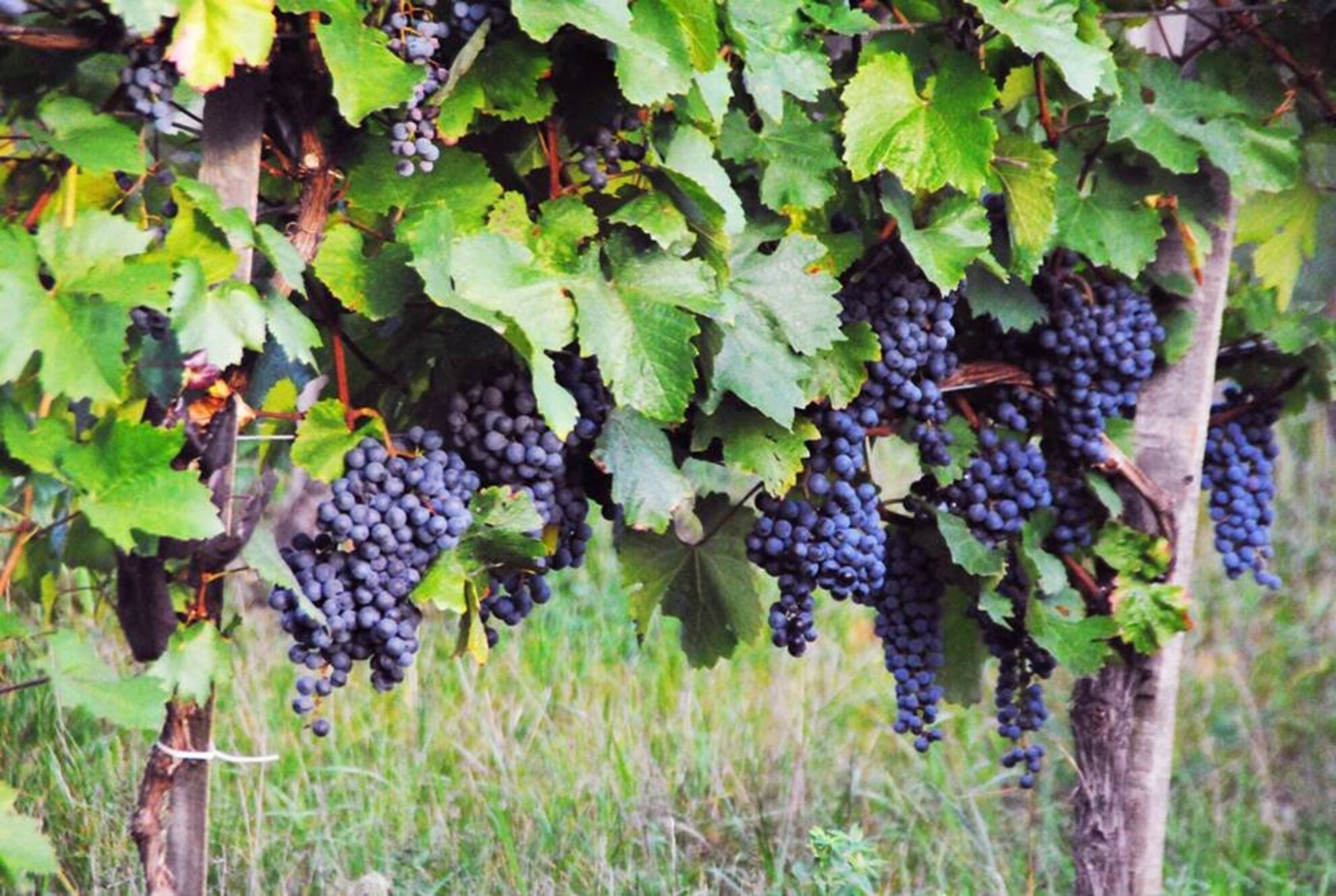
The Füred-based family winery – the lovechild of Lilla Lukács and Barna Barabás – is in the process of producing its second vintage ever. Last year, they were one of the lucky ones: they managed to make a good impression despite the poor weather. Now they face a difficult challenge: they have to create memorable wines that outshine others made under equally favorable conditions.
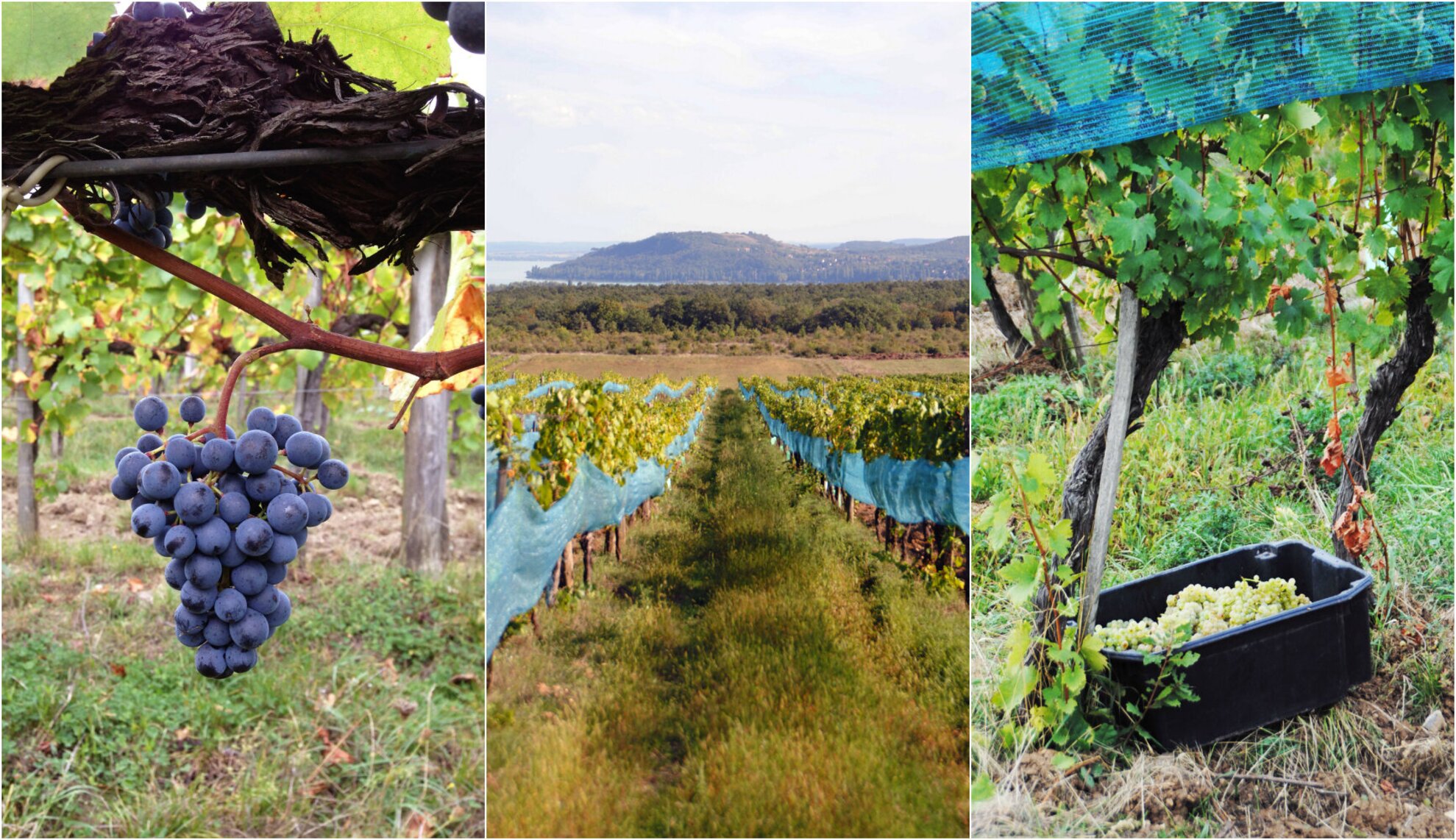
Like many other wineries, they consider Welschriesling to be their main variety. From this year’s harvest they’ll make a lighter, more reductive Riesling, using the grapes collected from the Balatonfüred vineyards (Farkó-kő and Lapostelki-dűlő), and a fuller Italian with grapes from Farkó-kő, the winery's most important plot.
Csite-dűlő in Balatonszőlős is expected to yield a Pinot Gris, a rosé (from Zweigelt and Merlot) and a Bordeaux blend (Cabernet Sauvignon and Merlot).
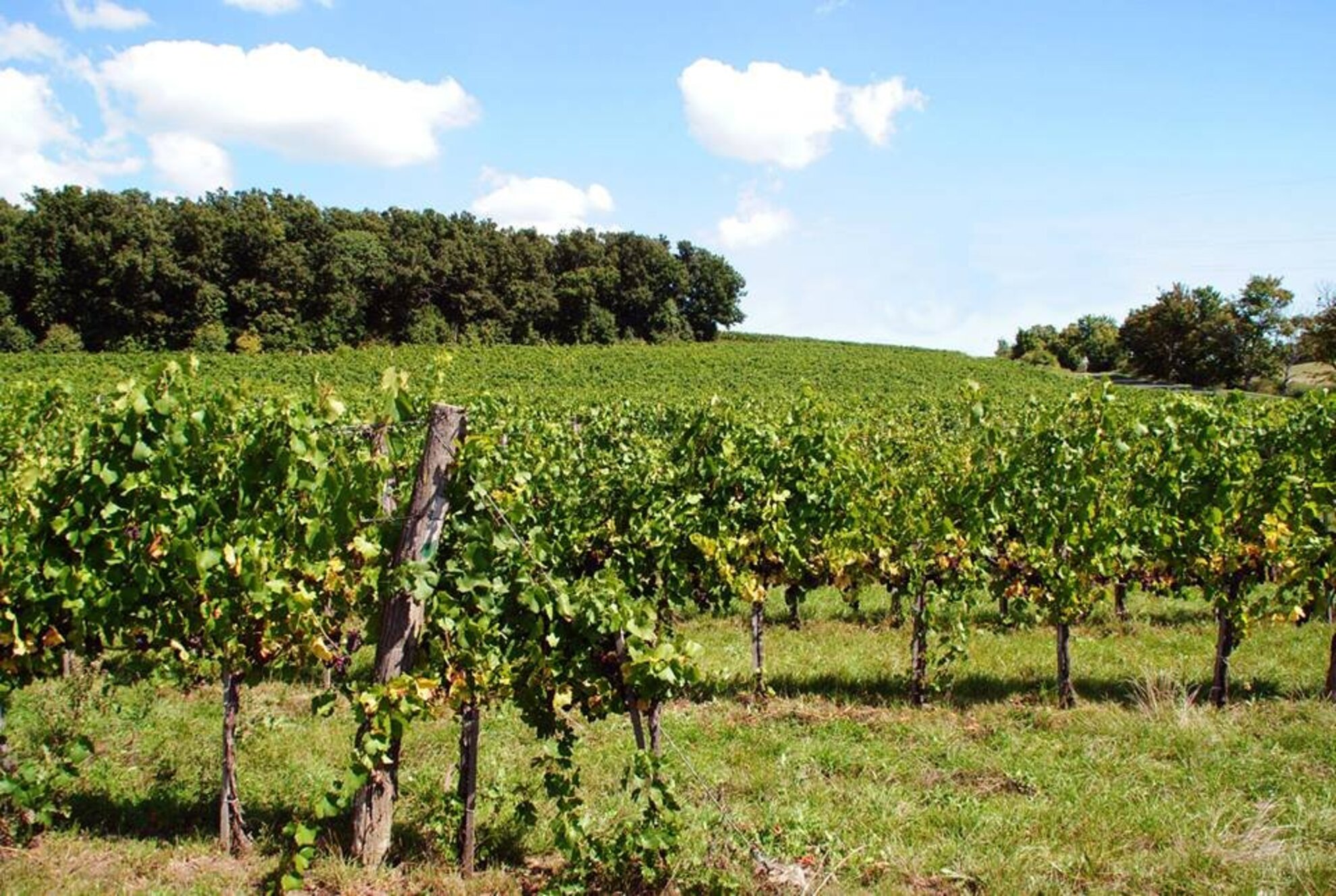
Lilla and co. also began the harvest early: “We started on September 8, all we have left is the Riesling on Farkó-kő, the Merlot that will go in the rosé and the other blue grapes. We’ll be done with everything by the end of next week.”
The team has come together quite nicely: Lilla, Barna, Lala, the winemaker, and his wife Bori are the flag-bearers, and there are about ten others from Ajka helping out with the harvest. “It’s no secret that everyone in this part of the country wants to work with these guys from Ajka because they can each do as much as two regular people,” says Barna.
They ferment everything without exception in huge tanks; they say this is what gives the wines their characteristic freshness, fruitiness and clarity. The spiciness comes from the first- or second-filled barrels that are used for storage and further fermentation. One thing was particularly important this year: the harvest was carried out in phases with the balance of sugar and acids in mind. In terms of the different phases, the same variety was collected from a vineyard with gaps spanning a few days to a week.
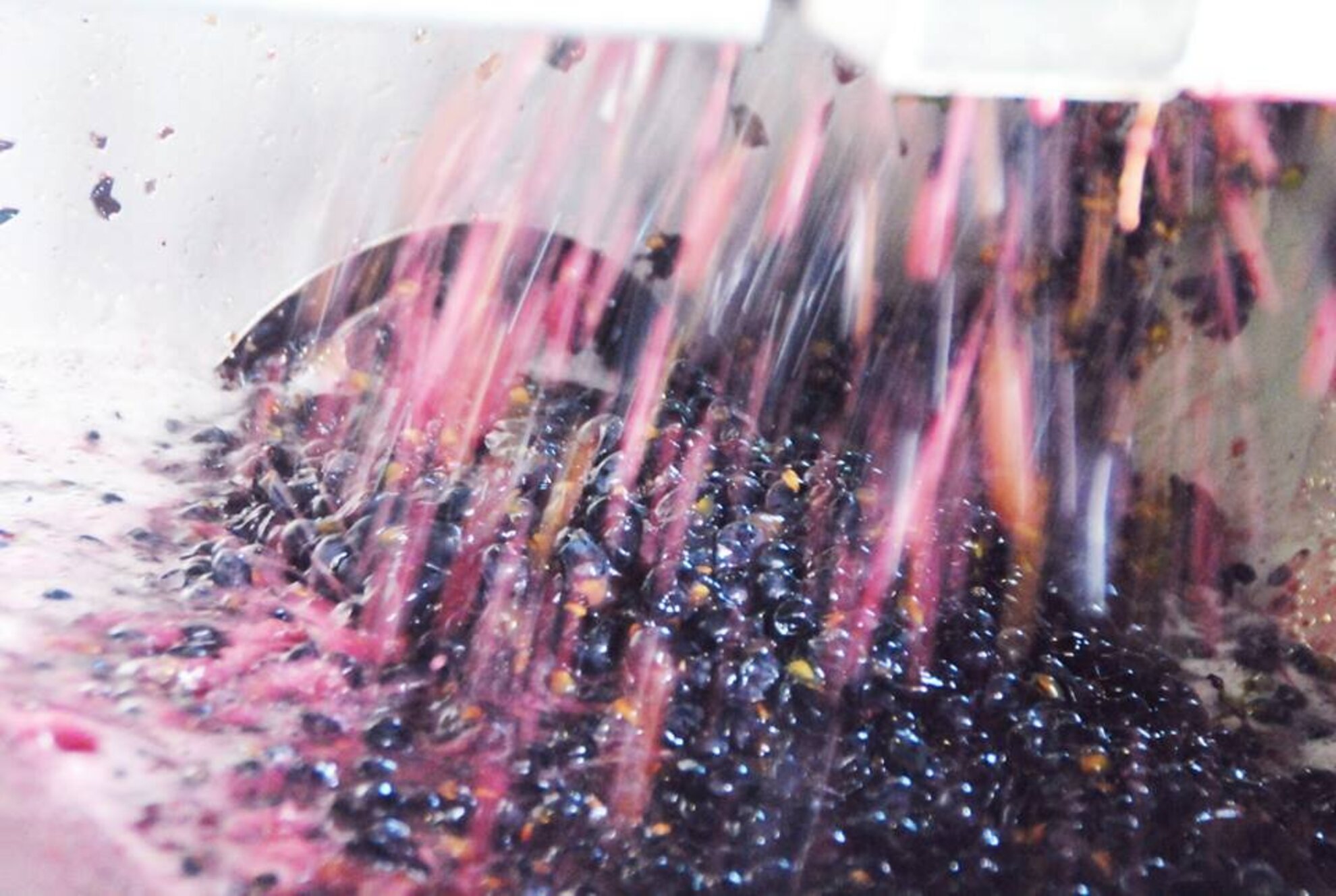
As regards sugar and acids, some of the grapes were harvested earlier than others – as they were less ripe, they helped preserve the freshness of the wine. When the grapes are picked at a later point, they contain a lower level of acids and a higher degree of sugar, which ensures the necessary amount of alcohol, while the substance of the wine is provided by the ripeness of the grapes. That’s how the perfect balance is created: enough alcohol and acid. The things we tasted were very promising, now it’s all a matter of what happens in the cellar.
It’s all about Codex wines in Csopak
We also peeked inside a wine cellar a few kilometers away in Csopak. It’s one of the prettiest estates in the area, it has a stunning view and a great restaurant, and it was named after a sedimentary rock – we’re sure you’ve figured out which establishment we are talking about.
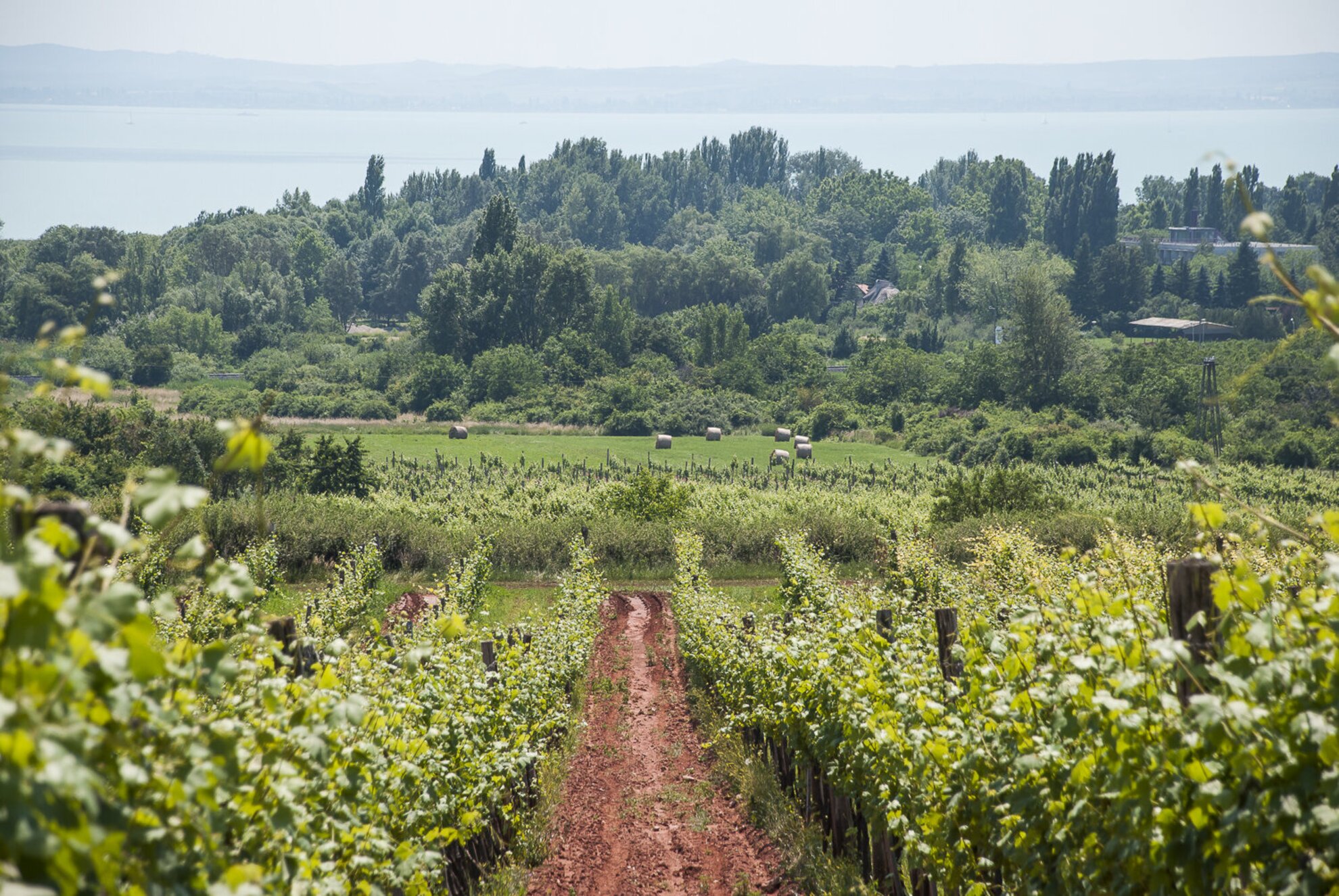
Yes, this is Márga Bistro and Szent Donát Manor on Szitahegy. What we love the most about Tamás Kovács is that he keeps planning, developing, changing, and progressing. For example, this year they harvested Welschriesling from a brand new plot, and the grapes are going to be made into Codex wines. The vineyard is called Slikker-dűlő; its must was already fermenting away in the barrels at the time of our visit.
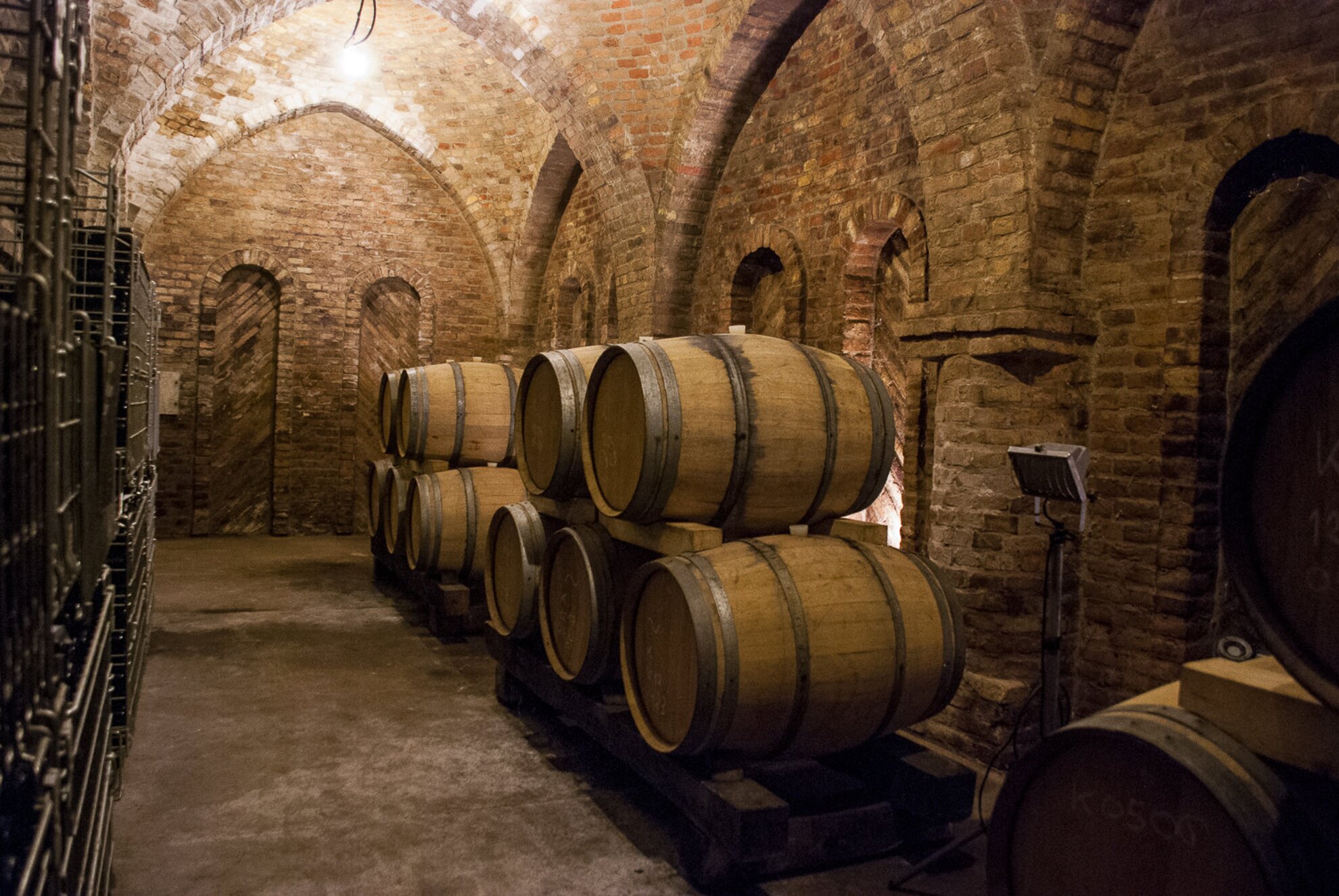
They kicked off the harvest with Berekháti Riesling on September 1, but Tamás had qualms about the early start: “I think we were the first ones in the country to harvest Riesling. Berekhát is a steep vineyard with a warm climate, and the grapes there ripened so quickly that we had to do something.” Luckily, the grapes at higher altitudes ripened at a normal pace, and they managed to achieve a 19.5 must weight and great acids as well.
After Berekhát, the next day they moved on to Sauvignon Blanc, which emerges as the most popular wine both at the cellar and the restaurant year after year. Like the above-mentioned Slikker, Kishegy is another one of the plots where grapes are picked for vineyard designated wines. The vineyard as well as the wines receive positive feedback every year, and thanks to the high quality, they meet the strict criteria of the Csopak Codex.
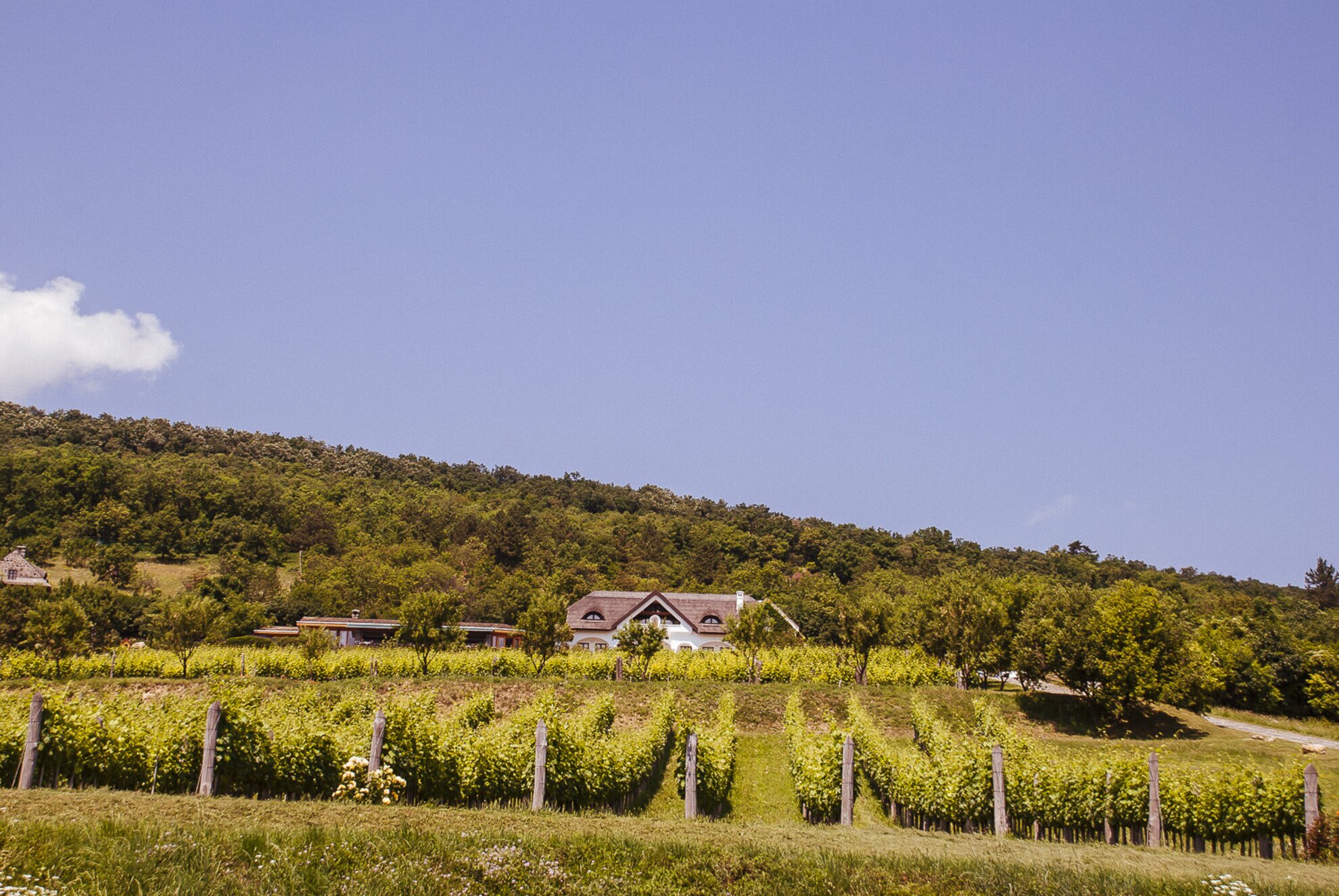
Based on the yield, Tamás expects a record-breaking year with a guaranteed 30,000+ bottles. Thankfully, there’ll be plenty of space in the cellar: their entire stock of Furmint will be sold in America, and the team has great plans for the variety as a whole on the international scene. Furmint February could be a thing on the west coast – but that’s something for the future. In 2015, the spotlight will be on whites and Blaufränkisch: this is the first year Blaufränkisch from Csopak and Tihany will be bottled separately.
